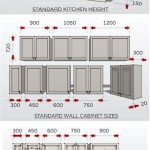Essential Aspects of Kerala Kitchen Design Ideas
Kerala's vibrant culture and traditions are beautifully reflected in its distinctive kitchen design ideas. Whether you are renovating your existing kitchen or planning a new one, incorporating elements of Kerala's culinary heritage can create a space that is both functional and aesthetically pleasing. Here are some essential aspects to consider when designing a Kerala-style kitchen:
1. Traditional materials
Traditional Kerala kitchens often feature natural materials such as wood, stone, and clay tiles. Wooden cabinets and countertops add warmth and character to the space, while stone flooring provides durability and a rustic touch. Clay tiles, with their intricate designs, can be used to create colorful accents on backsplashes or as decorative elements.
2. Open and spacious layout
Kerala kitchens are typically designed to be open and spacious, allowing for easy movement and ample natural light. Ample counter space is essential for preparing traditional Kerala dishes, which often involve multiple ingredients and cooking techniques. A large central island or peninsula can serve as a focal point and provide additional work surface.
3. Efficient storage
Storage is a key consideration in Kerala kitchen design. Built-in cabinets, shelves, and drawers help keep utensils, spices, and other essentials organized. Open shelves can be utilized to display frequently used items or to add a touch of visual interest. Vertical storage solutions, such as pull-out drawers and wall-mounted racks, make the most of limited space.
4. Traditional cooking appliances
Traditional Kerala cooking involves the use of specific appliances, such as the "chula" (earthen stove) and the "uruli" (round-bottomed cooking vessel). While modern kitchens may opt for gas or electric cooktops, incorporating these traditional elements can add authenticity to the design. A dedicated space for the "chula" can create a cozy and inviting focal point.
5. Natural lighting and ventilation
Natural lighting and ventilation are crucial in Kerala kitchen design. Large windows allow for ample natural light, creating a bright and airy atmosphere. Cross-ventilation is essential to remove cooking odors and maintain a comfortable temperature. Skylights can be incorporated to maximize natural light in smaller spaces.
6. Regional accents
Kerala's unique regional influences can be incorporated into kitchen design through the use of colorful tiles, hand-painted murals, or decorative accessories. Brass and copper accents, which are common in Kerala architecture, add a touch of elegance and authenticity. Chandeliers or pendant lights with intricate designs can create a statement overhead.
7. Personalized touches
Personalizing your Kerala-style kitchen with family heirlooms, artwork, or other meaningful items adds a touch of sentimentality and makes it truly unique. A display case for treasured utensils or a wall hanging featuring traditional Kerala motifs can add character and create a sense of home.
By incorporating these essential aspects into your Kerala kitchen design, you can create a functional and beautiful space that celebrates the vibrant culinary heritage of the region. Whether you prefer a traditional or modern aesthetic, blending these elements will result in a kitchen that is both practical and a reflection of Kerala's rich culture.

Simple Kerala Kitchen Designs Photo Gallery

The Ultimate Guide To Kitchen Designs Modular Designers

Modern Kitchen In Kerala Style 8 Points To Remember

Pin Page

Kerala Modular Kitchen Design Images Ideas Lemon Interior Designers

15 Kerala Simple Kitchen Design Tips For Small Homes

15 Kerala Simple Kitchen Design Tips For Small Homes

Kerala Modular Kitchen Design Images Ideas Lemon Interior Designers

Amazing Open Kitchen Design Ideas For A Modern Home D Life

Kerala Kitchen Design Cabinets Modular Kitchens In
Related Posts








